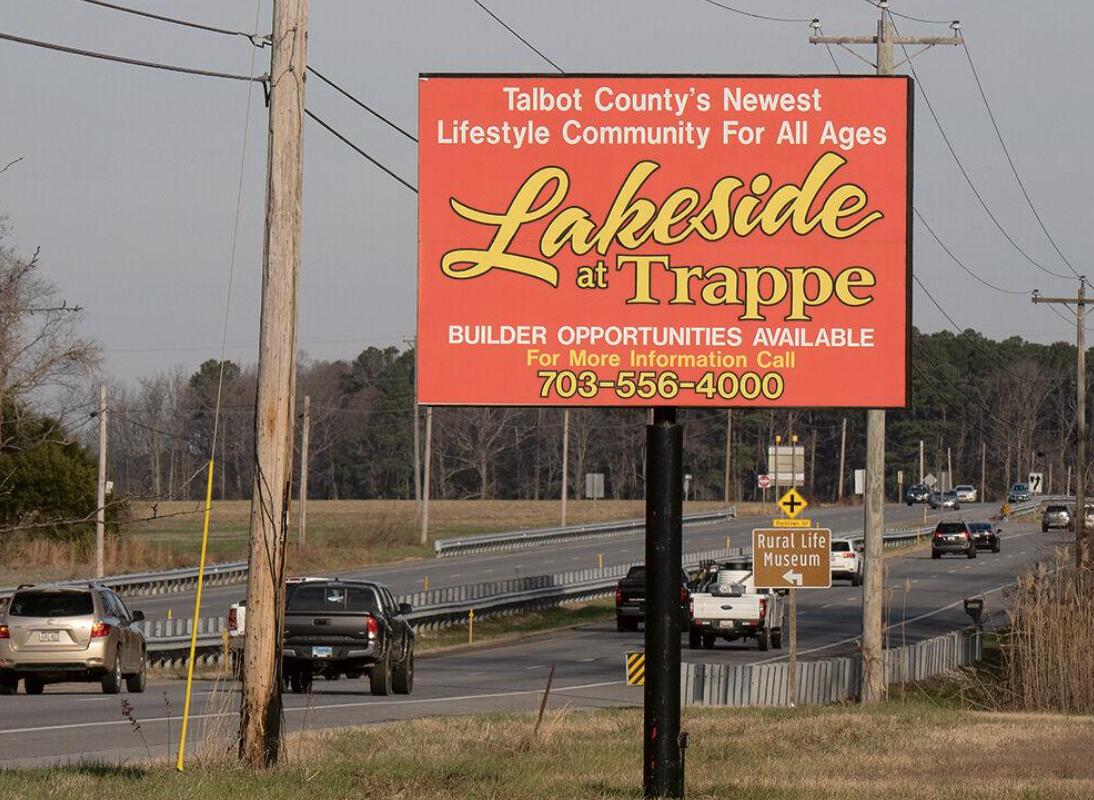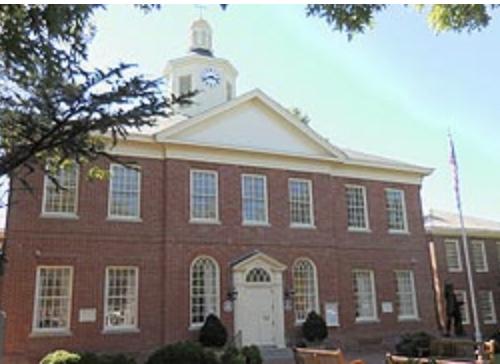To start, I can report that the County Council will resume hearing Petitioners’ case for rescission of Resolution 281 (the greenlight given Lakeside in August 2020) at a work session at 5 PM on Monday, December 13th in the Bradley Room.
Monica Otte and I met recently with the County Manager Clay Stamp and County Attorney Patrick Thomas, and open communication should assure the presentation will go much more smoothly than at the October 12th meeting. The meeting will be open to the public and will be livestreamed and transcribed for the record. As earlier, I will be the only person speaking on behalf of petitioners (now at least 425, up from 349 on Sept 24th). But I can call witnesses and present exhibits. It is also agreed that the presentation will not exceed two hours.
To add your own voice to this citizens’ effort, just send a short email supporting Petition 21-01 to [email protected].
The Public Hearing on Pete Lesher’s Resolution 308 at which all citizens can speak will also resume but in a separate session that I believe will to be held the following evening; that is, at the regular December 14th Council Meeting. Here, speakers are limited to three minutes (five if representing an organization.) See the Council’s agendas when posted.
As to substantive developments concerning Lakeside, much has happened since the last Focus on Talbot. That was the report on facts revealed by the Choptank Riverkeeper and by our neighbor, Dr. Smullen, about the outrageous failures ongoing at the existing Trappe sewerage plant—to which Rocks Engineering (the developer) intended to hook the first 89, or 120, or 250 or some number of houses for some indefinite period of time. And all of the problems meant more sewage effluent into that little tributary feeding the long-impaired La Trappe Creek. Everyone seems to agree that hooking up to the existing plant would be insanity—and yet it was the pillar on which the start of construction of Lakeside rested.
In keeping with the season, let’s use a sports metaphor. Rocks Engineering is scrambling in the backfield, trying to do anything to avoid rescission. Yet “rescission without prejudice” (meaning Rocks can bring Lakeside back for reconsideration once open questions are answered) is exactly what buys Talbot County the time to get it right—that is what’s needed. And the Council unquestionably has the authority to rescind R281, as we all learned from the legal opinion obtained last month by three of our neighbors from the respected firm of Gallagher, Evelius and Jones.
Here is one remarkable illustration of the scrambling Rocks Engineering is doing right now—laid out in broad daylight but missed by most everyone:
On the morning of October 6th Matt Pluta (the RiverKeeper) presented to the Planning Commission data from an independent lab showing the existing Trappe Plant is regularly discharging nitrogen at a level at least thirteen (13) times higher than the St. Michaels wastewater plant. Trappe is not in violation only because, astonishingly, MDE has put no limit on the amount of total nitrogen it can discharge into La Trappe Creek! And the lab report showed E coli and fecal coliform in the stream below the plant at more than ten times the threshold Maryland deems safe. Dr. Smullen delivered a 21-page report showing huge inflow and infiltration (“I&I”) problems in Trappe, and that the plant fails even with precipitation far from extreme. Lisa Ghezzi, a Commissioner, read language from the MDE’s permit that clearly says that a sludge permit is required, but which the Town’s attorney dismissed (since they don’t have one) because of an email from someone at MDE.
Anyone attending that PC meeting saw that a majority of Commissioners were extremely concerned about the existing plant, and hooking up more houses before that plant and its I&I problem are both fixed properly likely was not going to fly. The meeting recessed before a vote.
That very night (October 6th) the Trappe Town Council happened to be meeting. (Trappe is the Co-Applicant with Rocks Engineering on the Lakeside project, and to say they work closely together is to understate reality. They act as if partners, even though one should be the regulator and the other the regulated.) At its meeting the Town commissioned a new engineering study for some quite extraordinary alternatives to the Lakeside sewerage scheme.
After eighteen years (18!) with but one plan on the table—to hook up the first Lakeside homes to the existing plant–the Town decides on the very day new facts come to the attention of the Talbot Planning Commission that it should spend taxpayer money to explore radical new alternatives. (The Town of Trappe has always owned and operated the existing plant, and has always known the facts disclosed earlier that morning.)
The next evening, October 7th, the Planning Commission meeting continued, with Rocks Engineering’s lawyer explaining to the Commissioners that the Applicant had other new alternatives it was exploring for wastewater! (Watch the explanation here, beginning at 11:50, or attached below is a non-official transcript.)
What are these new ideas? First, maybe the new Lakeside plant “will be expanded,” and all of Trappe’s sewerage (plus water from the I&I problem?) will get pumped to the new plant on the east side of Rt. 50–then the flow from the existing Town will be pumped back to La Trappe Creek…and the Lakeside flow will be sprayed upland of the pristine Miles Creek. Or maybe the waste now generated in Trappe will get pumped to Lakeside for treatment, and a “hybrid” system will be used–in summer spray it on the fields there, but in winter pump it all back to discharge into that little unnamed tributary at the headwaters of the shallow and ill-flushed La Trappe Creek. Or—and I’m not making this up—all of Trappe’s sewerage gets pumped to Lakeside for treatment, and then it is all pumped back to discharge into that little unnamed tributary all year long, with no spraying.
That is some scrambling! It’s not that all of those ideas are necessarily crazy, but that they were only brought up on the very day the Planning Commission met to consider rescission–and fourteen months after R281 was first adopted? That these ideas were first revealed to the County just 50 minutes before the Planning Commission vote? That anyone believes these ideas will be properly vetted by December 1st, the purported study deadline? That is what’s crazy.
And among other things, Rocks Engineers’ attorney pointed out that “MDE will have to determine how it will fund it.” [Read taxpayers. And if I were a certain type of developer, I might relish mixing state work in with my own—an opportunity to game that funding system.]
By December 1st not one of these brainstorms will have advanced much beyond a concept; not one will have been deeply vetted even by the Applicant, much less the Talbot County Public Works Advisory Board, the Planning Commission, the County Council, or the Public. Not one of these ideas was mentioned at the October 28th MDE hearing…and is there any doubt that the whole MDE discharge application process would need to be redone in toto with any of these changes?
With all due respect, if this exercise is to stave off rescission without prejudice of Resolution 281, it’s absurd. Like trying to build the airplane while flying it too. The very purpose of rescission is to buy the time to get things right, and that is what Talbot needs. The scrambling is a distraction, and the Talbot County Council should rescind R281 forthwith.
Dan Watson is the former chair of Bipartisan Coalition For New Council Leadership and has lived in Talbot County for the last twenty-five years.
Unofficial good faith transcript
11:56 Ryan Showalter, attorney for TEHBT (not Town of Trappe).
[Bracketed language is DW comment.] Emphasis added.
“The Town has a PER that it prepared in connection with its plan to replace or upgrade its treatment plant.” [So, existing PER it is completed. Not clear if it has ever been released to anyone.] One of components of R281 is a capital improvement project to upgrade their plant. [Describe what that means.] The first step to getting any state of federal funding is to do a PER, Preliminary Engineering Report, that looks at a number of alternatives ranging from doing nothing to a variety of other approaches, and that evaluation is performed by an engineer. The evaluation provides reasonable cost estimates for the various alternatives, evaluates their feasibility, there timing. And, so, they produced a PER that looked at a number of different alternatives.
“And through a variety of different discussions [without reference to who, when, where], a new alternative became apparent [in the last 24 hours?] which was the possibility of EXPANDING the Lakeside plant. …. Put 200,000 gallons of capacity online on the east side of Route 50, and if that happens, essentially the existing town collection system [with huge I&I problems] goes to the town treatment plant…and there would be a new pump station at the town treatment plant that would pump wastewater to the new Lakeside plant, it would be treated to ENR levels, and then discharged….
“The Town is evaluating three potential scenarios: one is to keep the existing discharge permits as they are, so Lakeside would discharge 540,000 gpd [no ref to 1,500,000 max]… consistent with its [not yet issued] permit and the Town would have a 200,000 gpd point discharge. Another alternative is to look at a hybrid system where there is spray during the summer and point discharge during the winter. And then the third is to look at discharging all of it through the point discharge and not having spray irrigation.
“The Town Council [just last night] approved a proposal from the Town Engineer [who?] to do that evaluation and amend their PER to add the results of that evaluation….the Town has a soft deadline from MDE [why is MDE giving deadlines? Are they in loop?] of December 1st to evaluate alternatives and provide information about their next steps. So, my understanding is that the engineers intend to do that evaluation quickly so the Town can understand the potential implications and consider that.”
[Opined that a good chance that will be the way to replace the Town plant in 18-20 months. President Councell pressed him, but understandably he could not commit.]
[17:25] “If the Town decides to go that route…”
“A number of diff factors here obviously. The first is, and I want to be very clear, I have no influence over that; we don’t control that. It’s a Town decision, the Town citizens have to evaluate that. MDE WILL HAVE TO DETERMINE HOW TO FUND IT. There are lots of variables there that we don’t control. Assuming they select that as the alternative, we’re committed to cooperating with the Town in any form or fashion to expedite that.”
















